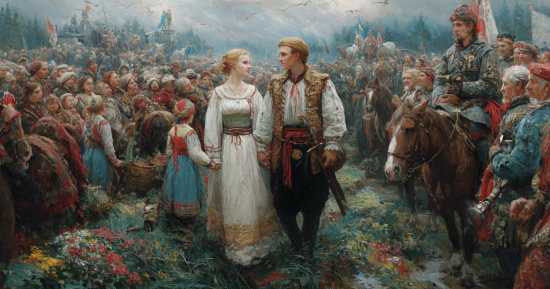
Nestled between vast forests and winding rivers, the Belarusian History Quiz invites you into a world where culture and tradition flourish. Folk festivals fill towns with music, dancing, and embroidered costumes that tell stories without words. Local artisans craft intricate linen and woodwork, preserving techniques refined through centuries. Villages smell of fresh-baked rye bread, a staple of Belarusian cuisine. Markets overflow with honey, berries, and handmade goods. Every corner of Belarus reveals a culture woven with artistry, pride, and enduring community.
Belarusian identity thrives in its everyday rhythms. Families gather around tables laden with dishes like draniki, celebrating both heritage and hospitality. Villagers teach songs and dances to younger generations, keeping traditions alive with joy. Craftspeople transform natural materials into art that honors the past. Cultural festivals showcase folk music, weaving history and performance into one vibrant expression. This living heritage connects people across cities, towns, and the vast countryside.
The Belarusian History Quiz reflects a culture grounded in creativity, unity, and shared tradition. Public celebrations highlight music that resonates with the nation’s soul. Artisans proudly display embroidery, ceramics, and woodcarvings passed down through generations. Seasonal fairs bring communities together in joyful gatherings. In Belarus, every tradition reinforces a sense of belonging and shared history.
Festivals and Cultural Traditions
Kupala Night celebrates the summer solstice with music, dancing, and floral wreaths floating down rivers. Bonfires light the sky as people gather to sing. Couples jump over flames, symbolizing renewal and happiness. This ancient celebration blends nature, community, and tradition. It remains one of Belarus’ most cherished cultural events. Maslenitsa, the festival of pancakes, welcomes spring with food and festivities. Villages fill with the smell of butter and fried batter. People gather for outdoor games, folk dancing, and sleigh rides. Traditional costumes brighten the celebrations. This event reflects warmth, laughter, and the enduring Belarusian spirit.
Harvest festivals highlight the connection between people and the land. Farmers bring produce to bustling markets. Folk bands perform music that echoes through open fields. Community feasts celebrate the bounty of the season. These moments showcase both gratitude and cultural pride.
Art, Music, and Culinary Heritage
Belarusian folk art thrives through embroidery. Intricate red and white patterns carry symbolic meanings passed through families. These designs appear on clothing, linens, and ceremonial items. Artisans view each stitch as a link between generations. Embroidery remains a visual language of cultural identity.
Music fills villages and cities with energy. The cimbalom and accordion lead lively folk bands. Singers perform traditional ballads that capture history and emotion. Street festivals feature dancing circles that welcome all. These performances embody the heart of Belarusian culture.Belarusian cuisine reflects both simplicity and tradition. Dishes like draniki, borscht, and rye bread connect communities around shared tables. Dairy-rich desserts and wild berry preserves add seasonal delight. Every meal carries a sense of place. Food remains a daily celebration of heritage.
7 Fun Facts About Belarusian History Quiz
- Kupala Night features wreath-floating ceremonies symbolizing luck and love.
- Draniki, or potato pancakes, are a national culinary favorite served across Belarus.
- Belarus has over 11,000 lakes, inspiring local folklore and songs.
- Maslenitsa pancakes symbolize the sun, marking the return of warmer days.
- The cimbalom is one of Belarus’ most distinctive folk instruments.
- Embroidery patterns differ by region, each with unique cultural meanings.
- Folk tales often feature magical forests and mythical creatures from Belarusian legend.
Community Spirit and Living Heritage
Community life defines Belarusian culture. Neighbors help one another with seasonal tasks. Rural gatherings often include storytelling sessions and shared meals. These traditions build bonds of trust and belonging. Culture here lives in ordinary moments of generosity.
Education strengthens cultural preservation. Schools teach folk dance, music, and handicrafts. Cultural centers host workshops for embroidery and woodworking. Young people learn not just skills but their historical meaning. This ensures each tradition remains meaningful.
Urban areas celebrate heritage too. Cities hold festivals showcasing rural crafts and music. Street markets sell locally made goods, reinforcing cultural pride. Public spaces transform into hubs of history and art. Modern Belarus keeps its traditions alive while welcoming change.
7 Serious Facts About Belarusian History Quiz
- Belarusian embroidery dates back centuries, with designs carrying cultural and family significance.
- Rural festivals remain central to cultural education and heritage preservation.
- The country’s music traditions include both instrumental and vocal storytelling forms.
- Traditional crafts such as woodcarving and pottery are protected through cultural programs.
- Local cuisines reflect influences from neighboring Slavic regions while retaining unique identity.
- Belarus’ folk art serves as a record of community values and history.
- Cultural initiatives support artisans and musicians to ensure traditional skills endure.
Belarusian History – FAQ
Key periods in Belarusian history include the medieval era when the Grand Duchy of Lithuania encompassed present-day Belarus, the Polish-Lithuanian Commonwealth, the Russian Empire’s rule, Soviet occupation, and the modern-day independent Belarus. Each era has left a lasting imprint on the country’s development.
Belarusian history has significantly shaped the country’s current political landscape, with echoes of past authoritarian regimes and Soviet influence still evident today. Understanding this history is crucial to comprehending the dynamics of power and governance in present-day Belarus.
